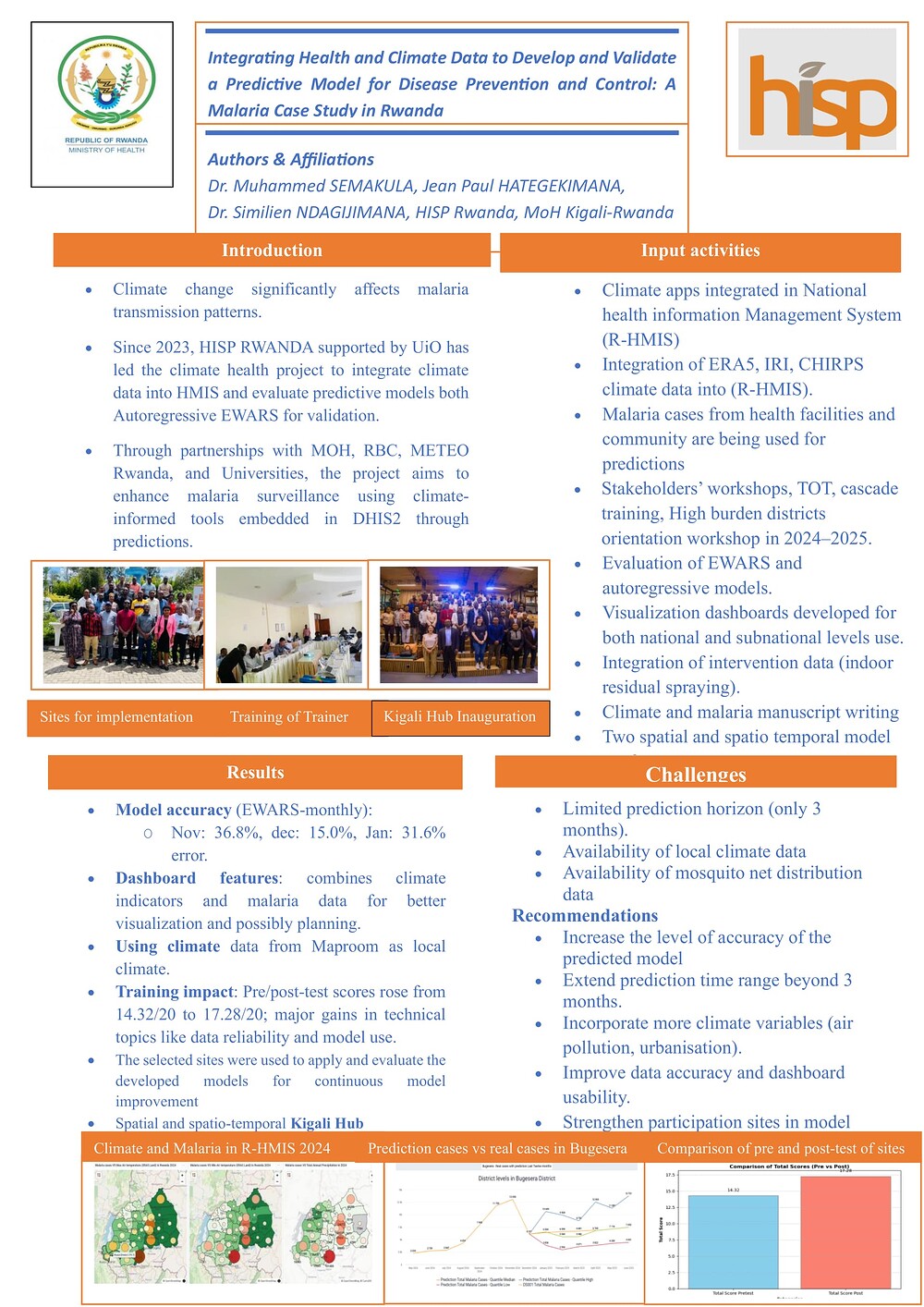AI Generated Summary
This document describes a project in Rwanda that integrates health and climate data to predict and control malaria, led by HISP RWANDA and supported by UiO since 2023. The project aims to enhance malaria surveillance using climate-informed tools embedded in DHIS2.
Key aspects of the project include:
- Integration of Data: Climate data (ERA5, IRI, CHIRPS) is integrated into the National Health Information Management System (R-HMIS) along with malaria cases from health facilities and communities.
- Model Evaluation: The project evaluates EWARS and autoregressive models for malaria prediction. Initial model accuracy (EWARS-monthly) showed errors of 36.8% (Nov), 15.0% (Dec), and 31.6% (Jan).
- Training and Impact: Training programs for trainers and cascade training have improved technical topics like data reliability and model use, with pre/post-test scores rising from 14.32/20 to 17.28/20.
- Dashboard Features: Visualization dashboards combining climate indicators and malaria data have been developed for national and subnational use.
- Challenges: Identified challenges include a limited prediction horizon (only 3 months), availability of local climate data, and availability of mosquito net distribution data.
- Recommendations: Recommendations include increasing model accuracy, extending the prediction time range beyond 3 months, incorporating more climate variables (e.g., air pollution, urbanization), improving data accuracy and dashboard usability, and strengthening participation sites in model development.
